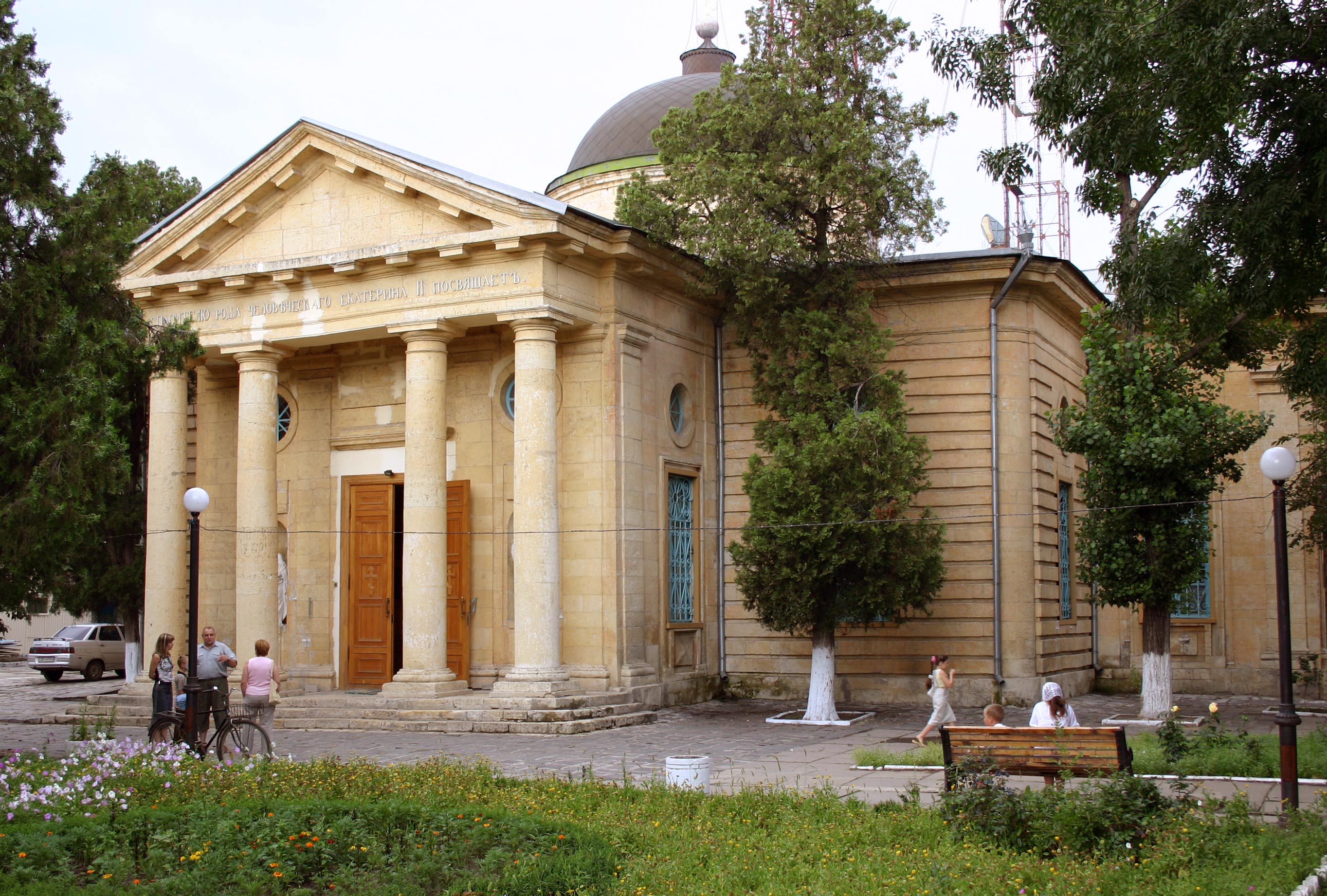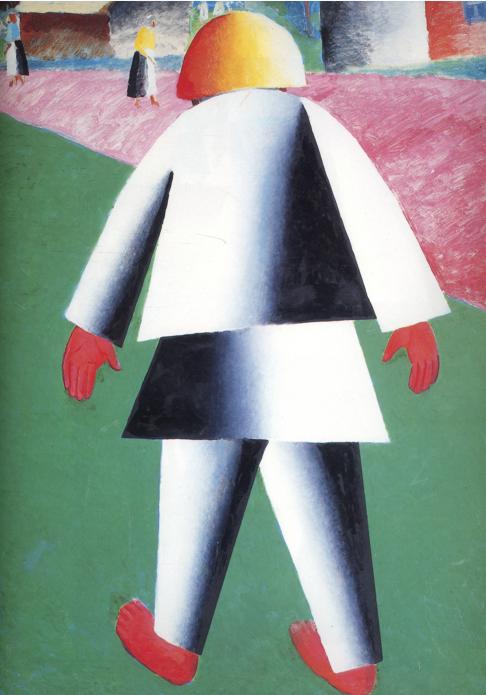|
Alexey Kruchenykh
Aleksei Yeliseyevich Kruchyonykh (russian: Алексе́й Елисе́евич Кручёных; 9 February 1886 – 17 June 1968) was a Russian poet, artist, and theorist, perhaps one of the most radical poets of Russian Futurism, a movement that included Vladimir Mayakovsky, David Burliuk and others. Born in 1886, he lived in the time of the Russian Silver Age of literature, and together with Velimir Khlebnikov, another Russian Futurist, Kruchenykh is considered the inventor of ''zaum'', a poetry style utilising nonsense words. Kruchonykh wrote the libretto for the Futurist opera '' Victory Over the Sun'', with sets provided by Kazimir Malevich. In 1912, he wrote the poem '' Dyr bul shchyl''; four years later, in 1916, he created his most famous book, ''Universal War''. He is also known for his ''Declaration of the Word as Such'' (1913): "The worn-out, violated word " lily" is devoid of all expression. Therefore I call the lily ''éuy'' – and original purity ... [...More Info...] [...Related Items...] OR: [Wikipedia] [Google] [Baidu] |
Kherson Governorate
The Kherson Governorate (1802–1922; russian: Херсонская губерния, translit.: ''Khersonskaya guberniya''; uk, Херсонська губернія, translit=Khersonska huberniia), was an administrative territorial unit (also translated ''gubernia'', ''province'', or ''government''), of the Russian Empire located between the Dnieper and Dniester Rivers. It was one of three governorates created in 1802 when the Novorossiya guberniya was abolished. It was known as the Mykolaiv or Nikolayev Governorate () until 1803, when Nikolayev was separated into a special Nikolayev War Governorate as a center of the Black Sea Fleet and the governor seat was moved to Kherson. The economy of the governorate was mainly based on agriculture. During the grain harvest, thousands of agricultural laborers from the parts of the Empire found work in the area. The industrial part of the economy, consisting primarily of flour milling, distilling, metalworking industry, iron mining, ... [...More Info...] [...Related Items...] OR: [Wikipedia] [Google] [Baidu] |
Russian Silver Age
Silver Age (Сере́бряный век) is a term traditionally applied by Russian philologists to the last decade of the 19th century and first two or three decades of the 20th century. It was an exceptionally creative period in the history of Russian poetry, on par with the Golden Age a century earlier. The term ''Silver Age'' was first suggested by philosopher Nikolai Berdyaev, but it only became customary to refer thus to this era in literature in the 1960s. In the Western world other terms, including ''Fin de siècle'' and ''Belle Époque'', are somewhat more popular. In contrast to the Golden Age, female poets and writers influenced the movement considerably, and the Silver Age is considered to be the beginning of the formal academic and social acceptance of women writers into the Russian literary sphere. History Although the Silver Age may be said to have truly begun with the appearance of Alexander Blok's "Verses about the Beautiful Lady", many scholars have extended its ... [...More Info...] [...Related Items...] OR: [Wikipedia] [Google] [Baidu] |
Elena Guro
Elena Genrikhovna Guro ( rus, Еле́на Ге́нриховна Гуро́, p=jɪˈlʲɛnə ˈɡʲɛnrʲɪxəvnə ɡʊˈro, a=Yelyena Gyenrihovna Guro.ru.vorb.oga; in marriage Matyushina ( rus, Матю́шина, p=mɐˈtʲuʂɪnə, a=Yelyena Gyenrihovna Matyushina.ru.vorb.oga; January 10, 1877 – May 6, 1913) was a Russian Futurist painter, playwright, poet, and fiction writer. Her career spanned the transitional period between Russian Symbolism and Futurism. Guro is noted for developing new theories of color in painting. She was also the only female member of the most influential Futurist group called Cubo-Futurism. Early life Guro was born in St. Petersburg on January 10, 1877. Her father was Genrikh Stepanovich Guro, an officer in the Imperial Russian Army of French descent. Her mother Anna Mikhailovna Chistyakova was a talented amateur artist. Guro spent her childhood in the village of Novosely near Pskov and at her father's estate in Luga. She inherited a government p ... [...More Info...] [...Related Items...] OR: [Wikipedia] [Google] [Baidu] |
Mikhail Larionov
Mikhail Fyodorovich Larionov (Russian: Михаи́л Фёдорович Ларио́нов; June 3, 1881 – May 10, 1964) was a Russian avant-garde painter who worked with radical exhibitors and pioneered the first approach to abstract Russian art. His lifelong partner was fellow avant-garde artist, Natalia Goncharova. Life and work Larionov was born at Tiraspol, in the Kherson Governorate of the Russian Empire. In 1898 he entered the Moscow School of Painting, Sculpture and Architecture under Isaac Levitan and Valentin Serov. He was suspended three times for his radical outlook. In 1900 he met fellow avant-garde artist Natalia Goncharova and formed a lifelong relationship with her. From 1902 his style was Impressionism. After a visit to Paris in 1906 he moved into Post-Impressionism and then a Neo-primitive style which derived partly from Russian sign painting. In 1908 he staged the Golden Fleece exhibition in Moscow, which included paintings by international avant-garde ... [...More Info...] [...Related Items...] OR: [Wikipedia] [Google] [Baidu] |
Cubo-Futurism
Cubo-Futurism (also called Russian Futurism or Kubo-Futurizm) was an art movement that arose in early 20th century Russian Empire, defined by its amalgamation of the artistic elements found in Italian Futurism and French Analytical Cubism. Cubo-Futurism was the main school of painting and sculpture practiced by the Russian Futurists. In 1913, the term ‘Cubo-Futurism’ first came to describe works from members of the poetry group ‘Hylaeans’, as they moved away from poetic Symbolism towards Futurism and ''zaum'', the experimental “visual and sound poetry of Kruchenykh and Khlebninkov”. Later in the same year the concept and style of ‘Cubo-Futurism’ became synonymous with the works of artists within Ukrainian and Russian post-revolutionary avant-garde circles as they interrogated non-representational art through the fragmentation and displacement of traditional forms, lines, viewpoints, colours, and textures within their pieces. The impact of Cubo-Futurism was then ... [...More Info...] [...Related Items...] OR: [Wikipedia] [Google] [Baidu] |
Moscow School Of Painting, Sculpture And Architecture
The Moscow School of Painting, Sculpture and Architecture (russian: Московское училище живописи, ваяния и зодчества, МУЖВЗ) also known by the acronym MUZHZV, was one of the largest educational institutions in Russia. The school was formed by the 1865 merger of a private art college, established in Moscow in 1832, and the Palace School of Architecture, established in 1749 by Dmitry Ukhtomsky. By the end of the 19th-century, it vied with the state-run St. Petersburg Academy of Arts for the title of the largest art school in the country. In the 20th century, art and architecture separated again, into the Surikov Art Institute in Moscow () and the Moscow Architectural Institute (); the latter occupies the historical School buildings in Rozhdestvenka Street. History The Palace School of Architecture goes back to the classes of Dmitry Ukhtomsky that operated in 1749–1764. Twenty years, the classes were reinstated by Matvey Kazakov, an ... [...More Info...] [...Related Items...] OR: [Wikipedia] [Google] [Baidu] |
After Babel
''After Babel: Aspects of Language and Translation'' (1975; second edition 1992; third edition 1998) is a linguistics book by literary critic George Steiner, in which the author deals with the " Babel problem" of multiple languages. ''After Babel'' is a comprehensive study of the subject of language and translation. It is both a controversial and seminal work that covers a great deal of new ground and has remained the most thorough book on this topic since its publication. Director Peter Bush of the British Centre for Literary Translation at the University of East Anglia described the book as a "pioneering work which revealed all communication as a form of translation, and how central translation is to relations between cultures." Daniel Hahn at ContemporaryWriters.com wrote that "It is extraordinary in making a real contribution to translation studies, while remaining fairly self-contained and accessible to people who have never before given the matter a second thought." ''Aft ... [...More Info...] [...Related Items...] OR: [Wikipedia] [Google] [Baidu] |
George Steiner
Francis George Steiner, FBA (April 23, 1929 – February 3, 2020) was a Franco-American literary critic, essayist, philosopher, novelist, and educator. He wrote extensively about the relationship between language, literature and society, and the impact of the Holocaust. An article in ''The Guardian'' described Steiner as a "polyglot and polymath". Among his admirers, Steiner is ranked "among the great minds in today's literary world". English novelist A. S. Byatt described him as a "late, late, late Renaissance man ... a European metaphysician with an instinct for the driving ideas of our time". Harriet Harvey-Wood, a former literature director of the British Council, described him as a "magnificent lecturer – prophetic and doom-laden ho wouldturn up with half a page of scribbled notes, and never refer to them". Steiner was Professor of English and Comparative Literature in the University of Geneva (1974–94), Professor of Comparative Literature and Fellow in the University ... [...More Info...] [...Related Items...] OR: [Wikipedia] [Google] [Baidu] |
Lily
''Lilium'' () is a genus of Herbaceous plant, herbaceous flowering plants growing from bulbs, all with large prominent flowers. They are the true lilies. Lilies are a group of flowering plants which are important in culture and literature in much of the world. Most species are native to the northern hemisphere and their range is temperate climates and extends into the subtropics. Many other plants have "lily" in their common names, but do not belong to the same genus and are therefore not true lilies. Description Lilies are tall perennial plant, perennials ranging in height from . They form naked or tunicless scaly underground bulbs which are their organs of perennation. In some North American species the base of the bulb develops into rhizomes, on which numerous small bulbs are found. Some species develop stolons. Most bulbs are buried deep in the ground, but a few species form bulbs near the soil surface. Many species form stem-roots. With these, the bulb grows naturally at s ... [...More Info...] [...Related Items...] OR: [Wikipedia] [Google] [Baidu] |
Dyr Bul Shchyl
Dyr bul shchyl (russian: Дыр бул щыл, ) is the earliest and most famous zaum/transrational poem by Aleksei Kruchenykh, written using the Zaum language, which, according to the author, is "more Russian national, than in all of Pushkin's poetry". The poem was written in December 1912. This date the author then called "the time of occurrence of the phenomenon of Zaum language (i.e. the language that has no utility value), in which are written the whole independent works, and not just parts thereof (as the chorus, sound decoration, etc.)". Initiator of the creation of the work of the "unknown words" was David Burliuk. "Dyr bul shchyl" was published in January 1913 in a series of "three poems" in Kruchenykh's book "Pomada" ( en, Pomade Pomade (; French ''pommade'') or pomatum is a greasy, waxy, or water-based substance that is used to style hair. Pomade generally gives the user's hair a shiny and slick appearance. It lasts longer than most hair-care products, and oft ... [...More Info...] [...Related Items...] OR: [Wikipedia] [Google] [Baidu] |
Kazimir Malevich
Kazimir Severinovich Malevich ; german: Kasimir Malewitsch; pl, Kazimierz Malewicz; russian: Казими́р Севери́нович Мале́вич ; uk, Казимир Северинович Малевич, translit=Kazymyr Severynovych Malevych ., group=nb (Запись о рождении в метрической книге римско-католического костёла св. Александра в Киеве, 1879 год // ЦГИАК Украины, ф. 1268, оп. 1, д. 26, л. 13об—14. – 15 May 1935) was a ... [...More Info...] [...Related Items...] OR: [Wikipedia] [Google] [Baidu] |



.jpg)


